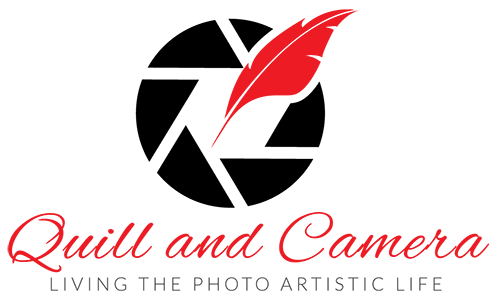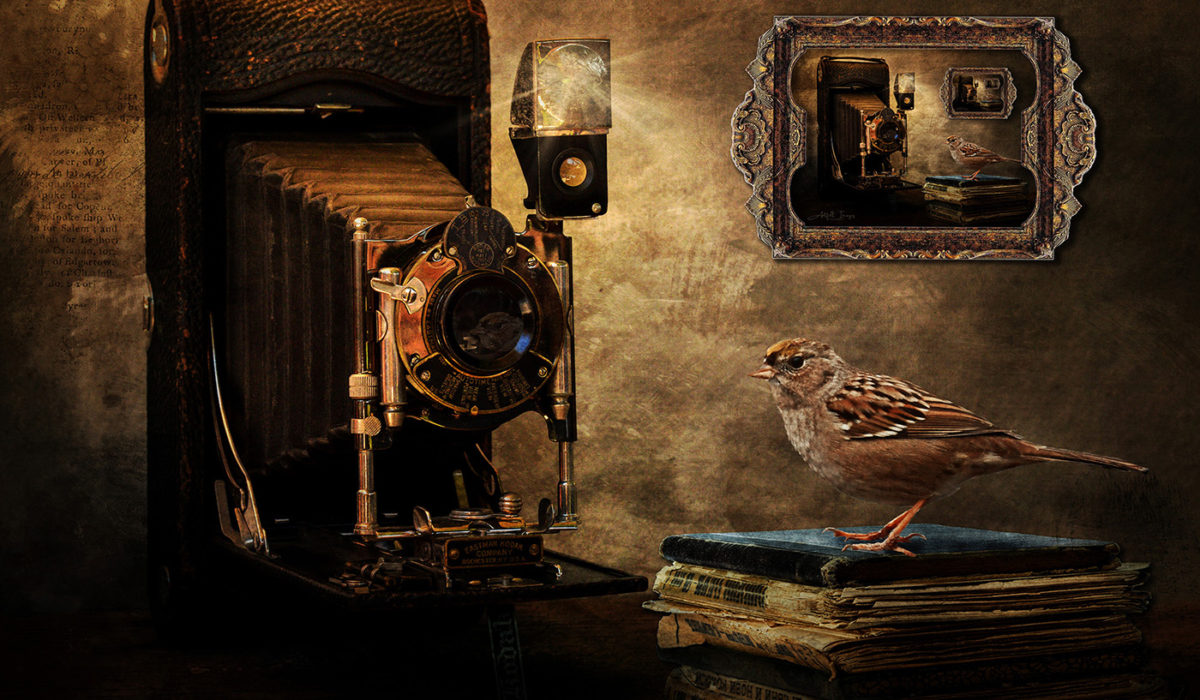— The featured artist of the 65th issue of Living the Photo Artistic Life magazine is US-based AWAKE artist Nina Irvin. I’m pleased to be able to share my interview with Nina here on Quill and Camera . . .
Q: What got you started in photo artistry?
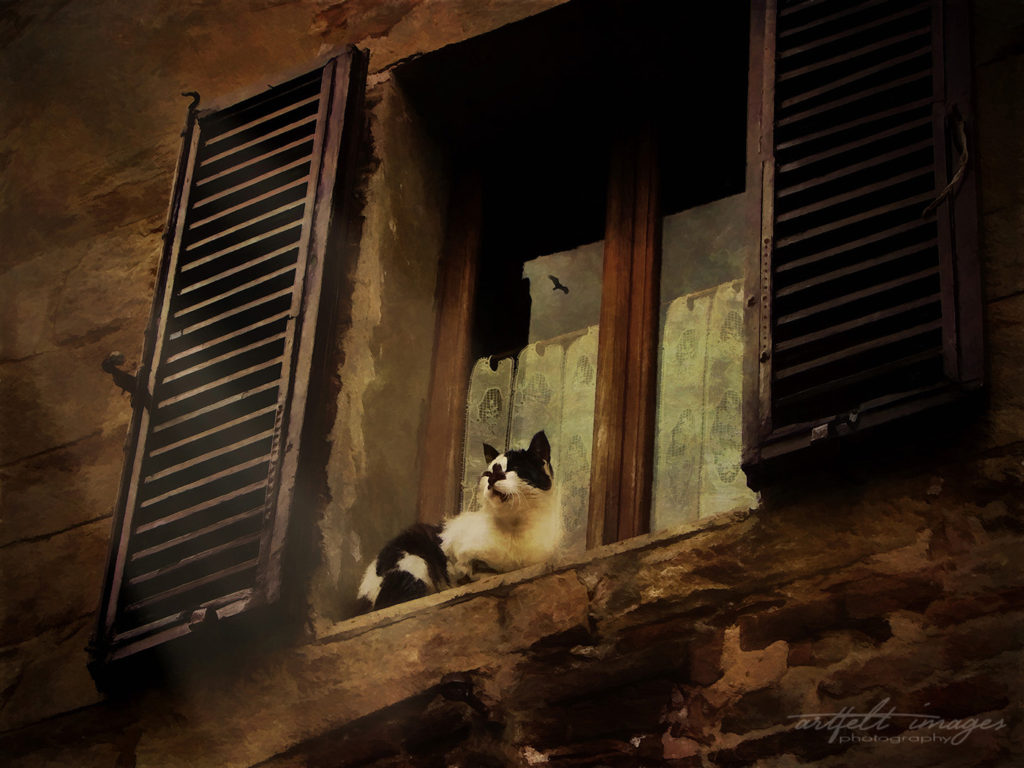
I learned to love the arts, specifically music and photography, from my mother many years ago as a child. Not only was she an accomplished musician, but also a wonderful photographer in her own right and traveled extensively capturing the world on film as she went. She was such an inspiration because her photos always seemed to tell an amazing story. It wasn’t until a few years ago after my own children were grown that I finally had the equipment and opportunities to pursue my own storytelling with a camera …
When digital cameras made their debut on the world stage, the word “photography” took on new meaning. To be able to take an ordinary photograph and create meaningful “photo art” — out of seemingly incongruous digital elements on a computer — was to me in itself utterly amazing.
I first gave digital art a try with the advent of digital scrapbooking, and I enjoyed it so much that I soon became confident enough to create a 110-page heritage book of my family’s history using Photoshop Elements. The book turned out amazing, and unbeknownst to me at the time, I was actually learning the techniques that would soon propel me into photo art.
I entered the wonderful world of Photoshop Artistry and Fine Art Grunge Composition with Sebastian Michaels and it didn’t take me long to become passionate about taking my own photos and transforming them into something unique, creative, and artistic. Shortly thereafter when I joined the AWAKE group, I was absolutely hooked for life.
Q: What is it that most inspires your work?
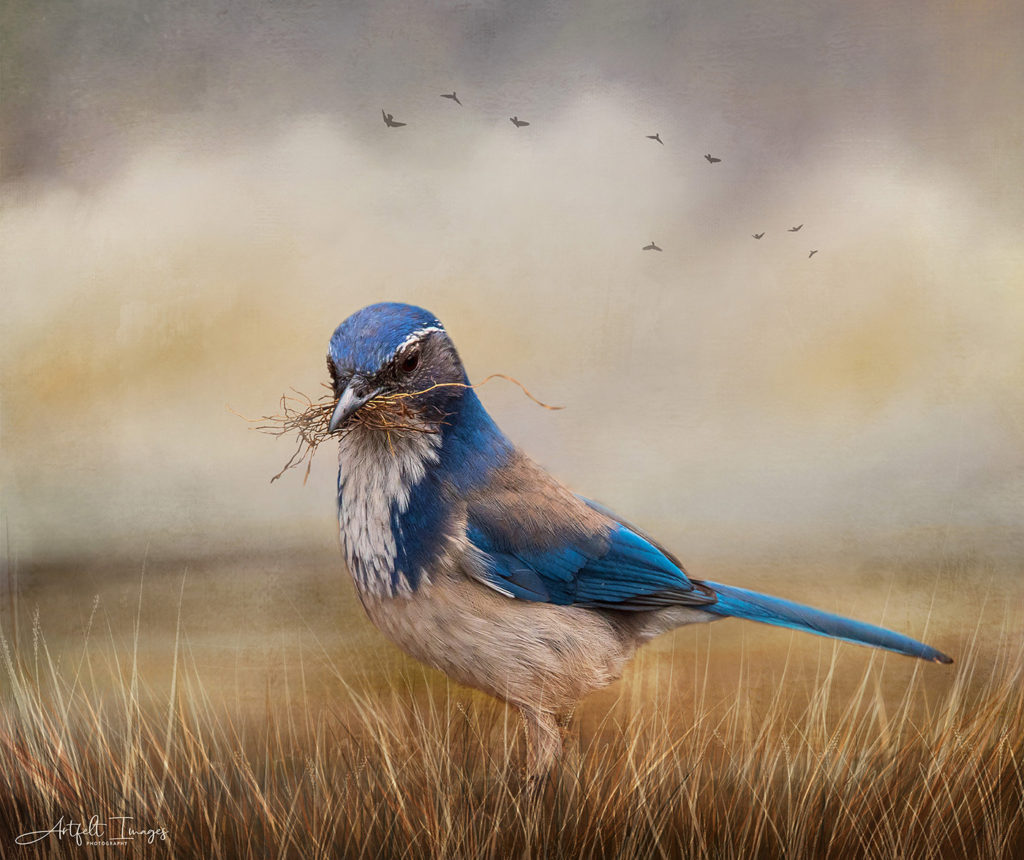
My photography! I can’t imagine being without my cameras (yes, more than one!) That, and the work of others that I see on my various private Facebook groups, especially the AWAKE group.
The name I have given my work — “Artfelt Images” — encompasses how I view my compositions: I “feel” the image, not just see it, and I try to convey those feelings in my work. It’s a way to expressively communicate a captured moment in time.
With the work itself, I strive to maintain a degree of realism, but at the same time try to make them artistic and infuse them with a sense of spontaneous creativity. This is important to me because I have found that my photography passion lies in the natural world of birds, wildlife, and landscapes. There is infinite beauty and purity to be found there. They predominate within my artwork.
I like to think of photo art as an evolution of individual “visual poetry.” It’s like fingerprints — no two artists are alike nor can they ever create the same thing. By the same token viewing work by other artists inspires me to evaluate my own skills objectively. It also assists me in bringing my experiences with nature to a level of art that still expresses reality in my work.
Everywhere I go I see things through a photographer’s eye: “Wouldn’t that make a beautiful composite …” Animal and bird behavior is particularly intriguing to me – a swallow feeding her fledglings on a fence post, or an eagle snatching a fish out of the lake.
I have never been what would normally be referred to as an “artist.” Rather, I like to think of myself as a digital storyteller. And while I don’t usually plan my entire “story” ahead of time, I find I can begin and then just let it evolve. Surprisingly, I find that is all the direction I need.
I have always been able to “see” in my mind something that would tell a wonderful “story,” but have never had the natural talent to express that vision on paper or canvas. But with the advent of digital photo artistry, I am limited only by my imagination and my willingness to try new things … Well, that and the time to create!
Q: How would you say living the photo artistic life has benefited you?
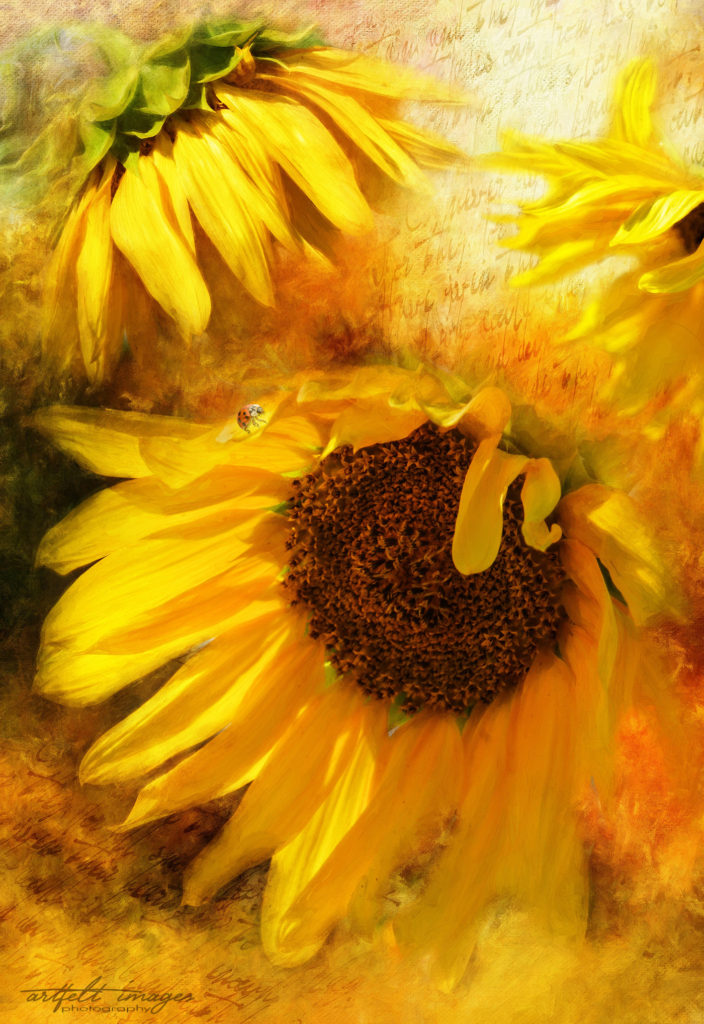
Discovering the photo artistic life was, in itself, life changing. Until I discovered Photoshop Artistry and AWAKE, I never realized just how important creating art in some form is to our well-being. It’s a place we can all escape to, a place where we can press life’s “reset” button to temporarily rid ourselves of the unhealthy daily worries and uncertainties, which is especially true now because of the global pandemic. Conditions beyond our control are keeping us from traveling these days and forcing most of us to stay home, which makes it even more critically important to allow ourselves permission to escape into our own personal realm of creativity. I, personally, am letting my photo artistic life take a front row seat! I give myself permission to create something almost every day, even if it’s simple, even if I make mistakes.
Simply taking a photo of a songbird in the backyard and digitally creating an artful image is more therapeutic than I ever thought possible. Creating art helps to center me, to bring me to a place of contentment because, at least for a while, I can escape into a world where there are no limits, no constraints, and no demands to be perfect. Telling a story with my photos through artistic means helps put things back into perspective. I find I can later “re-enter” the real world a little calmer and a lot more objective.
Being a breast cancer survivor I am acutely aware of the word “courage.” I try not to let the negative influences of today’s world dilute my desire to experience all the positive things that the natural world has to offer. But if anything, that is what propels me to experiment with my digital art with both passion and compassion. I look at the positive side of life through my art. That’s the attitude I had during my treatment, and that’s the approach I take with my photography and digital art. It’s not just about surviving, it’s about becoming better. And sometimes that takes courage.
Q: How do handle dry spells as an artist? (Do you even experience dry spells?)
Everyone experiences dry spells, where the thoughts just don’t flow in a cohesive manner, where ideas seem to stagnate, where the process itself just doesn’t seem to be going in the direction you want. If there was a nation for dry spells, I would be the queen!
Sometimes if I work on something too long, I get frustrated. So I walk away for awhile and do something else. I just get out of my own way and allow myself to breathe. When I come back later with fresh eyes to take another look and re-evaluate, often with a less complicated idea, 9 times out of 10 I can move past the “roadblock” and see what needs to be done.
That still leaves the one time in ten that it still doesn’t come together. Those go into a folder to wait. I can’t tell you how many pieces I have in my “in progress” folder that often sit there unfinished for several weeks, and in some cases, months, because of a dry spell. Something just didn’t gel so I put it in the folder to look at another day. So if I haven’t already hit the delete button, I’ll eventually come across it again and get an idea on how to proceed … and then, voila! It almost always comes out looking totally different — usually better — than I had originally envisioned. So if I don’t get excited about something I’m working on, I give myself permission to just tuck it away for awhile and work on something else.
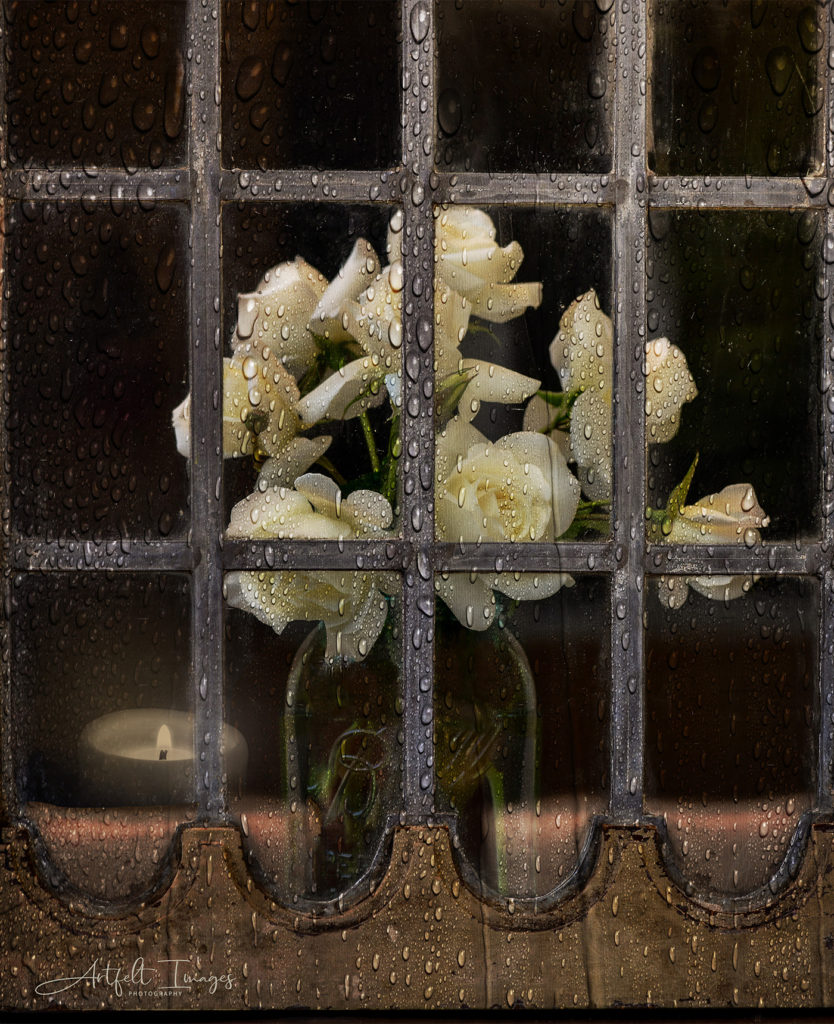
When I first discovered Photoshop Artistry and realized how much it had to offer, I seriously had to work hard to overcome a lot of prior self-constraints. I tend to be a perfectionist, and seeds of doubt still often cloud my ability to create. I was absolutely positive that everyone else was so much better than I was! I just knew that everyone else understood Photoshop better than me. But I soon realized that if I really wanted to enjoy this newfound passion to the fullest, I would have to force myself into believing that I had free reign to experiment however I wanted, that “anything goes”… that I was doing this for myself and not for anyone else.
And I came to learn how much I could transform my photos into my own personal style. So my mantra became, “Get busy and just do it!”
I began venturing out into uncharted territories and just kept trying something new and different. Even now, sometimes it works, sometimes it doesn’t. Most of the time the dry spell ends quickly … even if there are still lots of “somethings” hanging around in my “in progress” folder!
A final note here: Sometimes a “dry spell” disappears when you give yourself permission to create in other ways. When the AWAKE Photography group was born about a year and a half ago as an offshoot of the AWAKE course, I found yet another avenue to share my work. Oftentimes if I’m not feeling particularly creative or don’t want to tackle 50 layers to create a piece of art, I take a photograph and do some minimal post-processing to refine it and enhance the overall look to make it a little more acceptably eye-catching. Many of my photos are best left to tell their own story without me getting too involved. It’s still “art,” it’s still pleasing, and oftentimes what Mother Nature has put before my camera doesn’t need any improvement.
Q: How do you approach your creative work?
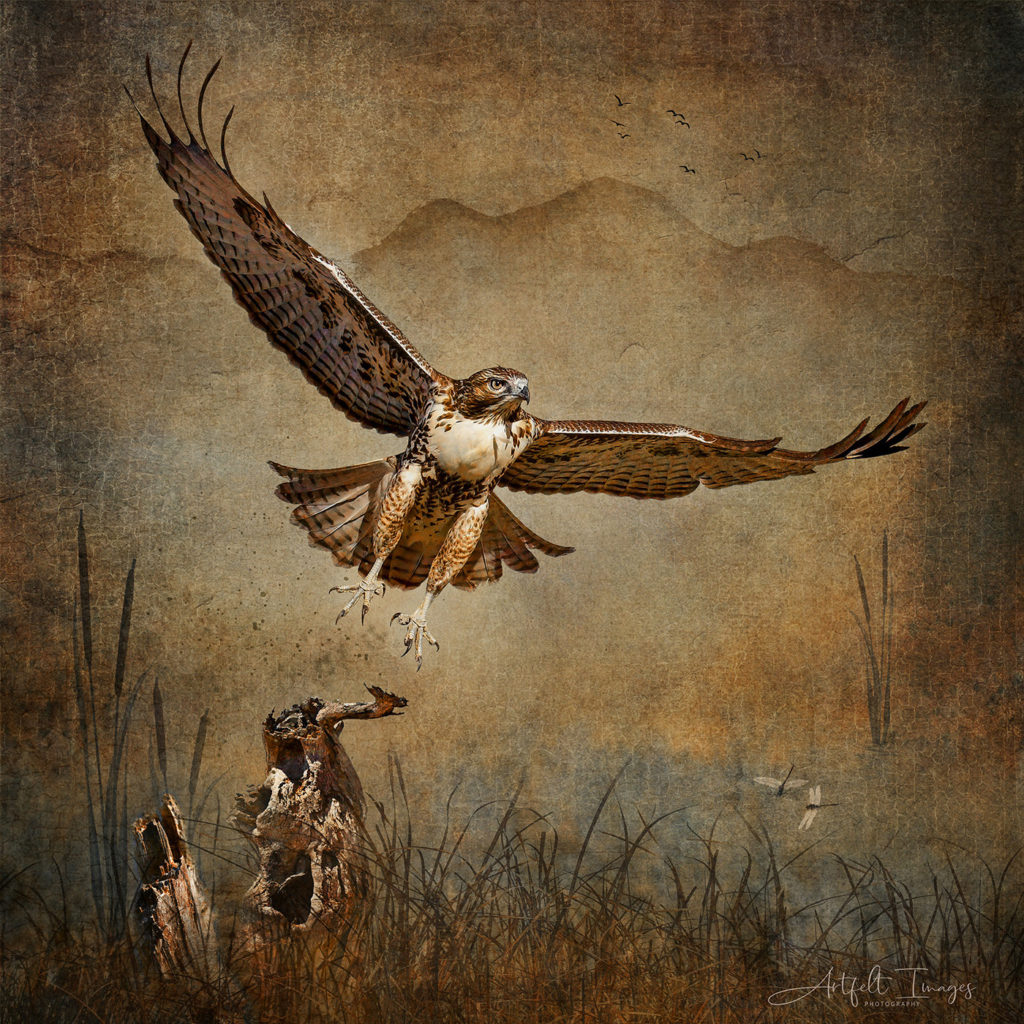
First of all, I don’t go anywhere without my camera! My camera is my gateway to my creativity. I never get bored with photography, and capturing creatures both great and small, or a sunset or clouds drifting overhead, or a gorgeous landscape sis the most rewarding outdoor activity I know of. And then to transform some of those images into a photo artistic piece takes that experience to a whole new level.
I use my own photos exclusively as my primary content when creating art. I literally have thousands of photos in folders on my computer. I usually start with an initial background layer or two, often blended together and altered in some way, then stack one or more images on top. And from there I allow my creation to take on a life of its own by letting it flow and evolve.
As I work, there are times when my layers panel can become an unwieldy incongruous mess: too many layers that need deleting or need to be labeled or grouped together in order to make it more manageable. One of the most important things I do in my work flow is to always, always use the History Panel, not only to allow me to easily retreat back several prior steps but more importantly to capture images as my work progresses. I learned the hard way that even 35 history snapshots later, as long as I don’t close Photoshop, I can go back and pick up at a previous step and proceed once again and head in a new direction if necessary.
Q: And what are your goals as an artist?
Overall, my ultimate goal in my digital artistry is to make the ordinary extraordinary, at least in my eyes. With each piece I ask myself what it is I’m trying to accomplish. By digitally creating a story with my own photo, by bringing out the best of that bit of nature captured with my camera … that is my goal.
Through photo artistry I have learned to literally “push my photography further,” to explore the natural world from a different perspective, yet keep that sense of realism that is so important to me. Taking something from what I originally saw in the viewfinder to a whole new exploratory level, by adding that “digital passion” to an ordinary photograph, can often transport it to another level of story-telling realism that captures the viewer’s eye and (with luck) really speaks to them. And that journey continually renews my own confidence and allows me to experience my artistic life at new heights and to new depths. (That’s the amazing thing about creativity!) And when something turns out better than I anticipated, it’s a triumph! A bonus!
Q: Any advice to other aspiring digital artists?
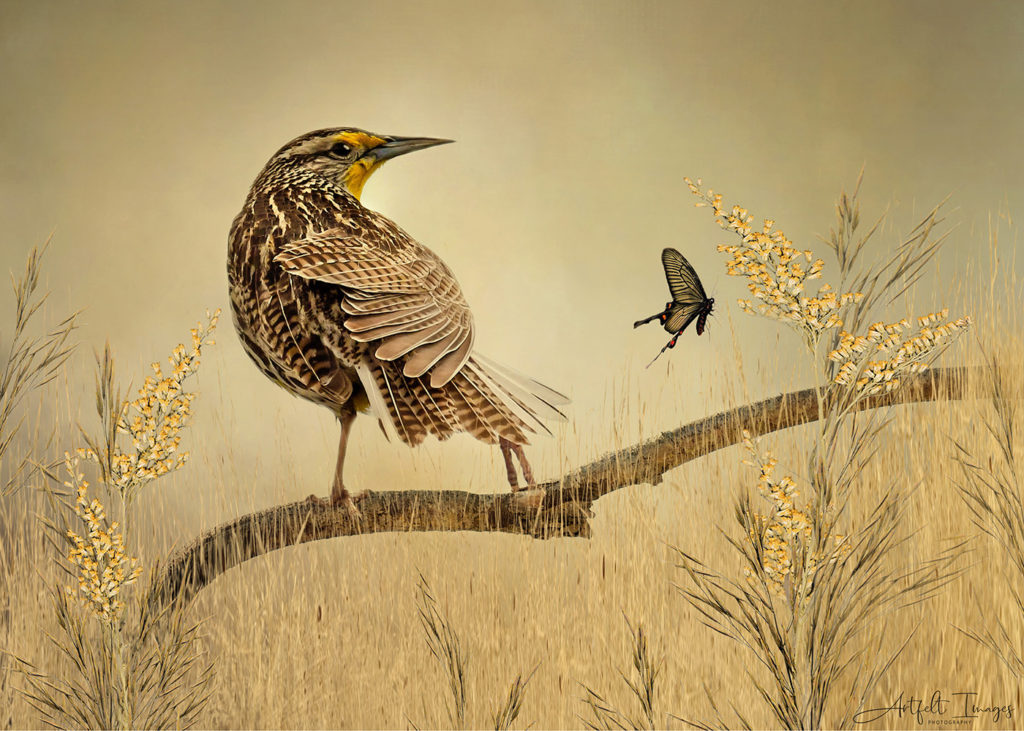
Give yourself permission to enjoy at least some dedicated time for your art — for yourself — each and every day. Even if it’s only for a few minutes. It might not always be a successful session, but just by making the time for your art you will have achieved something.
And watch tutorials! Over and over and over if necessary. If you have access to the Photoshop Artistry and AWAKE tutorials, those are yours forever. So immerse yourself in them.
Something else … Learn to trust your instincts. The ability to create something artistic is an amazing adventure, and it’s already inside each of us in some form or another. But there will be times when something doesn’t quite work or doesn’t please you at first. Don’t give in to frustration.
Practice is definitely the key here. It does take dedication and a willingness to try new things, new techniques. But you will learn so much that way. There will be days where you get discouraged, but that’s okay. That’s part of learning to live the photo artistic life. Don’t fret. Dust yourself off, put aside your self-doubt, and try again. It will come, and it will become part of you, and you will emerge more confident than ever.
Be sure you are studying the work of other artists you admire, especially within AWAKE – every issue of Living the Photo Artistic Life magazine is a virtual feast for the eyes as well as the soul. As you go through each issue, with each piece that grabs your attention ask yourself what it is that captures your interest, your imagination, your creative longing. Maybe even write down what you like or don’t like, and then look at other work by your favorite artists. Then perhaps attempt something similar … but try to make it your own. The more you create in this way, the more inspired you will become.
Remember: It truly is the journey, not the destination that’s most important. Just don’t look on that journey as some kind of race or competition. This is your craft, your vision. Consider inviting others to offer their critiques of your work if you like, though if you do invite criticism, give the suggestion some thought, but change your work only if you see the value in what they said. But whatever is said, don’t ever allow yourself to feel diminished. This is YOUR art. Not theirs. Anything goes as long as it pleases YOU.
